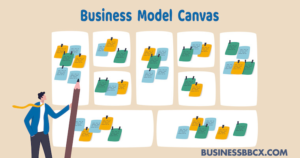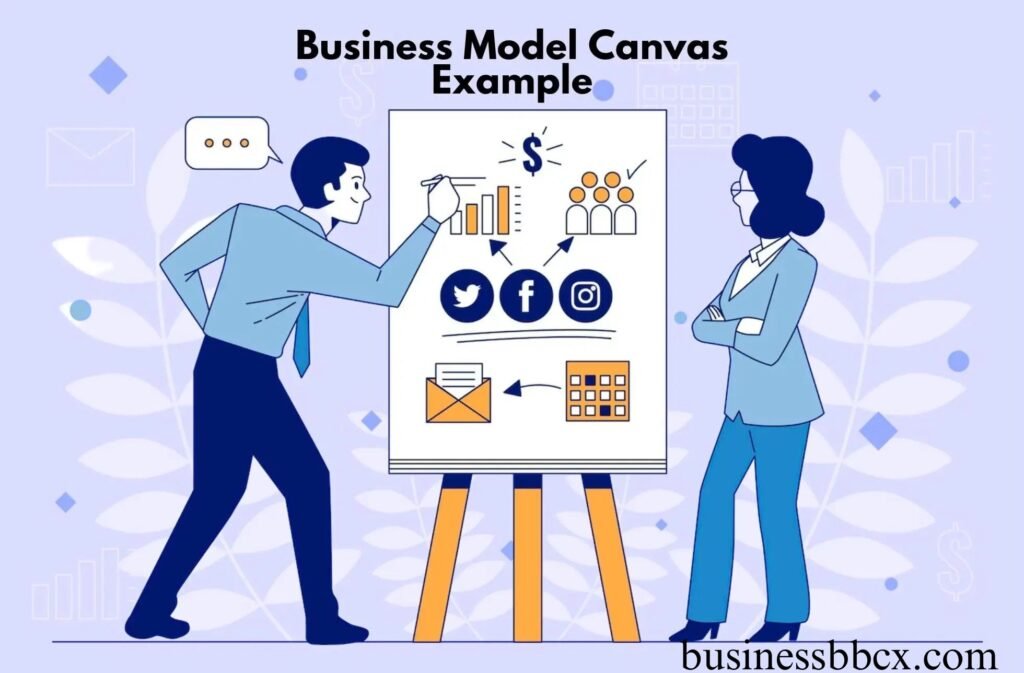The Business Model Canvas is a powerful tool for startups, businesses, and entrepreneurs looking to visualize and refine their business strategies. Whether you’re launching a new venture or improving an existing one, studying business model canvas examples can give you valuable insights into what works and what doesn’t. This framework helps break down a business idea into key components, making it easier to identify strengths, weaknesses, and opportunities for growth.
In this article, we’ll explore successful business model canvas examples as well as scenarios where certain businesses struggled. Learning both the positive and negative outcomes can help you refine your approach and set yourself on the path to success.
Table of Contents
ToggleWhat Is a Business Model Canvas?

The Business Model Canvas is a strategic tool created by Alexander Osterwalder. It allows businesses to outline their models using nine key building blocks:
Customer Segments: Who are your customers?
Value Propositions: What unique value do you deliver?
Channels: How do you reach your customers?
Customer Relationships: How do you interact with customers?
Revenue Streams: How does your business make money?
Key Resources: What resources are crucial to your business?
Key Activities: What actions are required to deliver value?
Key Partnerships: Who are your strategic partners?
Cost Structure: What are the primary costs involved?
By breaking down your business into these components, you can identify opportunities, streamline operations, and innovate to stay ahead of the competition.
Business Model Canvas Examples: Success Stories

Airbnb: Revolutionizing Travel and Hospitality
Customer Segments: Travelers looking for affordable, unique stays and hosts with extra space.
Value Propositions: Airbnb allows travelers to find unique accommodations at lower prices compared to traditional hotels while enabling hosts to earn passive income.
Channels: Online platform, mobile apps, and word-of-mouth marketing.
Customer Relationships: User-friendly platform with reviews, profiles, and customer support.
Revenue Streams: Commission fees on bookings (hosts pay 3-5% while guests pay 6-12%).
Key Resources: The platform, brand recognition, and host/traveler network.
Key Activities: Managing the platform, ensuring trust and safety, and innovating features.
Key Partnerships: Payment processors, insurance providers, and marketing affiliates.
Cost Structure: Platform development, customer service, and marketing expenses.
Lesson: Airbnb’s business model showcases how solving pain points for both customers and providers can disrupt an entire industry.
Spotify: Streaming Music for the Masses
Customer Segments: Music lovers, free users, and premium subscribers.
Value Propositions: Access to a massive music library on-demand with personalized playlists and offline options.
Channels: Mobile app, web platform, and integrations with devices like Alexa or smart cars.
Customer Relationships: Freemium model with a strong focus on personalization and user engagement.
Revenue Streams: Subscription fees from premium users and ad revenue from free users.
Key Resources: Music library, data-driven algorithms, and streaming technology.
Key Activities: Content licensing, algorithm improvement, and platform updates.
Key Partnerships: Record labels, artists, advertisers, and tech integrations.
Cost Structure: Music licensing fees, technology development, and marketing.
Lesson: Spotify’s use of a freemium model allows them to attract millions of users while converting a significant portion into paying subscribers.
Amazon: Dominating E-Commerce Globally
Customer Segments: Online shoppers, Prime members, and third-party sellers.
Value Propositions: A vast selection of products, fast shipping (Prime), and competitive pricing.
Channels: Website, mobile app, Alexa devices, and third-party integrations.
Customer Relationships: Personalized recommendations, Prime loyalty programs, and seamless customer service.
Revenue Streams: Product sales, subscription fees, third-party seller commissions, and AWS services.
Key Resources: Logistics network, AWS infrastructure, and technology.
Key Activities: Managing warehouses, improving logistics, and advancing technology.
Key Partnerships: Sellers, delivery partners, and manufacturers.
Cost Structure: Warehousing, logistics, tech development, and marketing.
Lesson: Amazon’s focus on customer experience and operational efficiency sets a benchmark for businesses worldwide.
Where Businesses Struggle: Business Model Canvas Pitfalls
Kodak: Failing to Adapt to Digital Transformation
The Problem: While Kodak invented the first digital camera, they failed to adapt their value proposition when consumer preferences shifted from film to digital photography.
Key Pitfall: Ignoring changing customer segments and failing to innovate led to their decline.
Lesson: Businesses must continually evaluate their value propositions to remain relevant in a dynamic market.
Blockbuster: Underestimating the Streaming Revolution
The Problem: Blockbuster stuck to its physical rental model, even as Netflix and streaming platforms began gaining traction.
Key Pitfall: Blockbuster’s inability to embrace technological advancements and update its key activities led to its downfall.
Lesson: Ignoring customer convenience and emerging trends can make even a giant obsolete.
How to Use the Business Model Canvas for Your Business

If you’re inspired by these business model canvas examples, here are steps to get started:
Map Out Your Business: Fill out each of the nine building blocks.
Focus on Value: Identify what makes your business stand out.
Evaluate Customer Needs: Understand who your customers are and what they want.
Analyze Revenue Streams: Pinpoint how your business generates income.
Adapt and Iterate: Continuously refine your canvas as market dynamics evolve.
By regularly reviewing your business model, you can avoid common pitfalls and pivot when necessary.
Final Thoughts on Business Model Canvas Examples
Examining business model canvas examples from successful companies like Airbnb, Spotify, and Amazon can provide actionable insights for businesses of any size. At the same time, learning from failures like Kodak and Blockbuster reminds us of the importance of adapting to change and staying customer-focused.
Whether you’re a startup or an established company, the Business Model Canvas is a flexible and powerful tool to map, test, and refine your business strategies. Use it to stay agile, innovate, and pave your way to success!
FAQs About Business Model Canvas Examples
What is a Business Model Canvas?
The Business Model Canvas is a strategic tool that helps businesses map out their value proposition, customers, revenue streams, and other essential components in a visual format.
Why should I use a Business Model Canvas?
It simplifies complex business ideas into a one-page document, helping you analyze, refine, and innovate your strategy effectively.
What are some famous Business Model Canvas examples?
Popular examples include Airbnb, Spotify, and Amazon, which showcase innovative approaches to customer segments and revenue models.
How does a Business Model Canvas help startups?
It provides clarity on key activities, costs, and value propositions, enabling startups to test ideas and pivot quickly as needed.
What are the common mistakes when using a Business Model Canvas?
Common mistakes include ignoring customer feedback, failing to adapt to market changes, and overlooking key partnerships or resources.
Can I use the Business Model Canvas for existing businesses?
Yes, the tool works for both new and existing businesses to evaluate their current models, identify gaps, and innovate for growth.


